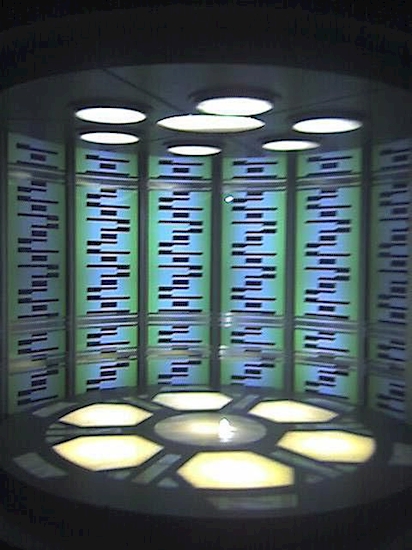Star Trek: Instantaneous Matter Transport
"Beam me up, Scotty!"
It's one of the most famous lines in the Star Trek franchise and refers to the futuristic matter transportation device on every ship in the galaxy. It dematerializes entire humans (and other objects) and sends their constituent particles to another destination where they are perfectly reassembled. It's the best thing to come to personal point-to-point transportation since the elevator. Every civilization in the show seemed to have this technology, from the inhabitants of Vulcan to the Klingons and Borg. It solved a LOT of plot problems and made the shows and movies iconically cool.
It all sounds fantastic, but will it ever be possible to develop such technology? The idea of transporting solid matter by turning it into a form of energy and sending it great distances sounds almost like magic. Yet, there are scientifically valid reasons why it might happen.
It may come as a bit of a surprise, but recent technology has made it possible to transport, or "beam" if you will, small pools of particles or photons from one location to another. This quantum mechanics phenomenon is known as "quantum transport". It does have a future in many electronics such as advanced communication technologies and super-fast quantum computers. Applying the same technique to something as large and as complex as a human is a very different matter, however. And, without some major technological advances, risking a human's life by turning them into "information" may make the Federation-style transporters impossible until the dangers can be assessed and solved.
So, what's the idea behind beaming? An operator dematerializes the "thing" to be transported, sends it along, and then the thing gets rematerialized at the other end. It seems to work fine with particles described above, but taking apart a human and dissolving them into individual subatomic particles isn't even possible right now. It seems extraordinarily unlikely, given our current understanding of biology and physics, that a living creature could survive the process. There are also some philosophical considerations to think about when transporting living beings. Even if the body could be dematerialized, how does the system handle the person's consciousness and personality? Would those "decouple" from the body? If not, how are they handled in the process? That's not something ever discussed in Star Trek, although there have been science fiction stories exploring the challenges of the first transporters.
One could argue that the transportee is actually killed during this step, and then reanimated when the body's atoms are reassembled elsewhere. But, this seems like a very unpleasant process, and not one that a person would willingly want to experience. Sure, the "copy" of the person might not think they are the copy, but even the idea that someone has to die to get transported so that a copy can be made at the other end is going to be a deal-breaker.
Let's suppose for a moment that it would be possible to dematerialize—or "energize" as they say on screen—a human occupant. There is an even greater problem: getting the person back together at the desired location. There are actually several problems with this. First, this technology, as used in the shows and movies, seems to have no difficulty in beaming the particles through all kinds of thick, dense materials on their way from the starship to distant locations. This in itself is terribly unlikely. Neutrinos can pass through rocks and planets, but lesser particles? Not so much.
Even more worryingly, however, is how to arrange the particles in just the right order as to preserve the person's identity (and not kill them). There is nothing in our understanding of physics that suggests we can control matter in such a way. And a person's identity and consciousness is not necessarily something that can be particalized and remade. That's not to say people won't figure out a way, but it seems like a pretty daunting task.
Given all the challenges, and based on our current understanding of physics, it does not seem likely that such technology will ever come to fruition. However, there are some scientists that haven't ruled it out. Maybe there is something in the future that can be marshaled to create safe transporters. Famed physicist and science writer Michio Kaku wrote in 2008 that he anticipated scientists developing such technology in the next hundred years.
If so, then it would be proof that there are many things that humans are capable of that we don't yet realize. We may very well discover a breakthrough in physics that would allow exactly this type of technology. However, for the moment, the only transporters we're going to keep hearing about will be in TV and movies, and maybe the occasional breakthrough in a physics lab.
Edited and expanded by Carolyn Collins Petersen
Source: www.thoughtco.com

